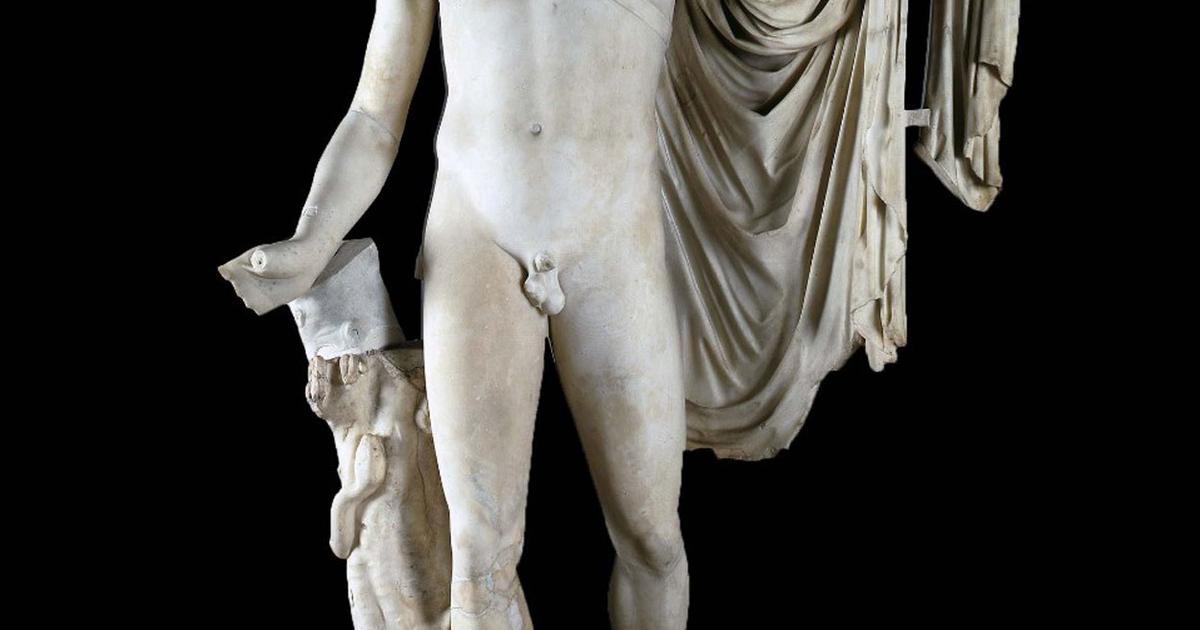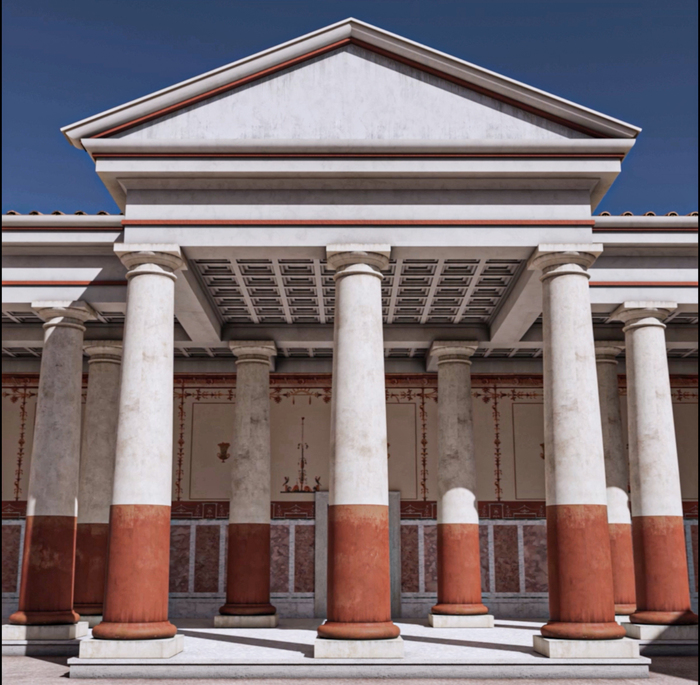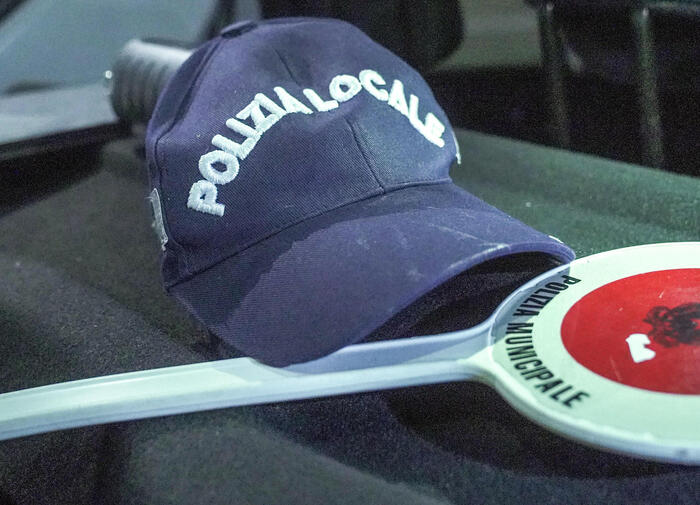ROME - It is a question that has been unanswered for a long time: Where exactly did the Appian Way begin, the ancient Roman road so famous that it was known as the "regina viarum" or queen of the roads?
Remnants of the original Appian Way, named after Appio Claudius, the Roman consul, and begun in 312 BC, are still visible (and make for a great walk) within Rome.
But the vestiges of the so-called
first mile
remain buried some
8 meters
below the level of the streets of contemporary Rome.
A section of an ancient wall unearthed in the search.
Photo Fabio Caricchia/Italian Ministry of Culture, via Reuters
In July, a team of archaeologists began the search for the lost starting point of the Appian Way by excavating a site in front of a row of ancient shops - still visible - that were part of the monumental entrance to the baths that the Emperor
Caracalla
built in 211 .
.
Digging through the millennial history of Rome, archaeologists and historians collected a wealth of information and data to shred.
They found traces of the farmland and vineyards that occupied this area for more than 1,000 years, until Rome rapidly modernized and expanded after being named the capital of Italy in 1870.
And they unearthed the remains of a 10th-century road and even older buildings, findings that suggest that from the 6th century to the High Middle Ages, this was a busy neighborhood.
Archaeologists believe the structures may have been tents serving pilgrims stopping at
Christian sites
believed to have sprung up in the area at that time.
"Urban excavations provide vital information to better understand the topography of an area at different times," explains Mirella Serlorenzi, scientific director of the excavation, which is being carried out by the Special Superintendence of Rome, under the Ministry of Culture, and the University Rome Tre.
But the excavation was hampered - and eventually paralyzed - by a powerful flow of
groundwater
that even modern pumps could not keep up with.
"Unfortunately, due to the groundwater, we cannot continue digging," explains Serlorenzi, who is also the director of the Baths of Caracalla.
He pointed to a section of excavated earth with a wide crack through which a considerable stream of water gushed.
"We ran the risk of losing knowledge and information," he said, so the excavations stopped when archaeologists reached a level about 1.5 meters above street level in Roman times.
"It was an extremely complex excavation," echoed Riccardo Santangeli Valenzani, a Roma Tre professor of Medieval Archeology who worked daily at the site.
Excavations in Rome in search of the first mile of the Appian Way in November.
Photo Fabio Caricchia/Italian Ministry of Culture, via Reuters
The location was selected on the basis of a series of preliminary studies that began in 2018, using funds from the European Union.
And initial evidence suggests that archaeologists may be on the right track.
Ancient sources report that nearby Septimius Severus, who was emperor from 193 to 211, had a wider road built - 100 Roman feet wide - to accommodate the growing Roman population.
Known as the
Via Nova,
the causeway is marked on the Forma Urbis Romae, the great marble map of Rome from the third century.
The marble head of a statue of a child from around the 2nd century.
Photo Fabio Caricchia/Italian Ministry of Culture, via Reuters
Archaeologists continue to debate the interconnection between the Via Nova and the Appian Way:
whether they were next to each other, whether the Nova was placed directly on top of the older track, or whether Septimius simply widened the Via Appia to create the Nova.
The walls of the shops found in the current excavation are about 30 meters -or 100 Roman feet- from the shops still visible in front of the Baths of Caracalla, which means that the roadway that passed through would correspond to the width Exactly from Via Nova.
Medieval coins found during excavations.
Photo .Fabio Caricchia/Italian Ministry of Culture, via Reuters
Thus, there are convincing indications that a causeway existed at the site of the excavations, "but we still cannot say whether it was the Appian Way or not," Serlorenzi said.
New excavations will depend on whether
funding is secured.
Artifacts unearthed during the excavation point to many centuries of occupation, including pottery from various eras, a marble head of a child dating to the third century, tiny bronze coins from Roman times that archaeologists described as "small change for expenses." lesser" and a more valuable square coin minted between 690 and 730, at the time when papal power was ascending in Rome.
The excavation was the subject of periodic chronicles for the general public, who could follow its progress through a Facebook page.
Specialists could consult
more detailed reports
on a government website.
Professor Santangeli Valenzani pointed out that the problem of water has been known since ancient times, when the area was known as
a "public pool".
Before
Caracalla built his baths here, two other emperors had also built thermal structures in the area.
"The water problem got worse when they stopped maintaining the local sewers in the fifth century," he said.
This month, the entire Appian Way - the 341 kilometers that separate Rome from Brindisi, a city on Italy's southeastern coast - was put forward as a candidate to become a UNESCO World Heritage Site.
This excavation is very good for the candidacy," said Daniela Porro, special superintendent of Rome.
It's also good for the city, experts say.
"One of the merits of this excavation is shedding light on an area where Roman history is layered," says Daniele Manacorda, a retired Roma Tre professor of archeology who has thoroughly investigated the elusive first mile.
"It's a stretch that thousands of people pass through every day, distracted driving their car. They probably have no idea where they are."
c.2023 The New York Times Company
look too
After 220 years, the fate of the Parthenon marbles depends on secret talks
An excavation in the depths of the sea recovers Hercules from the afterlife









